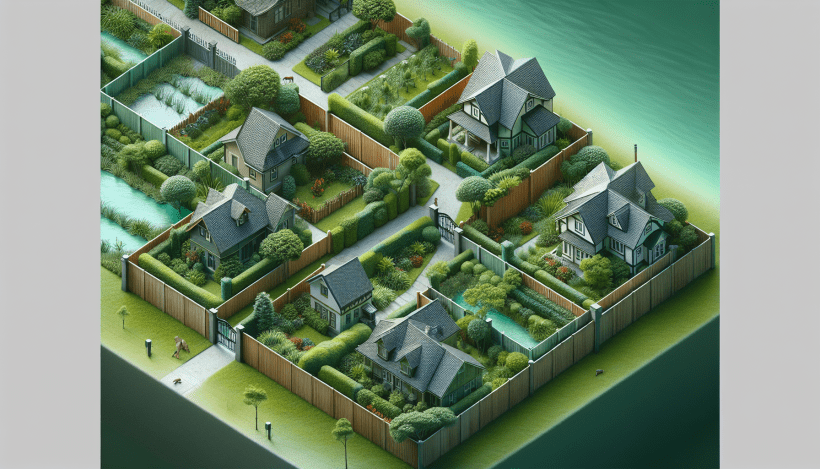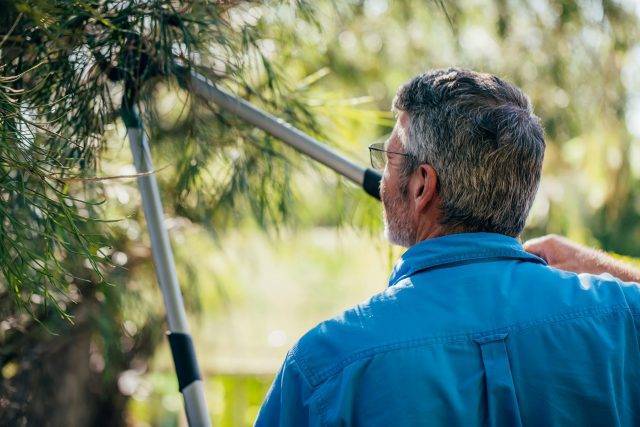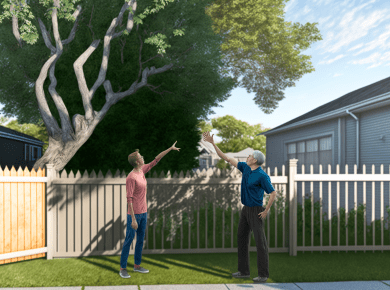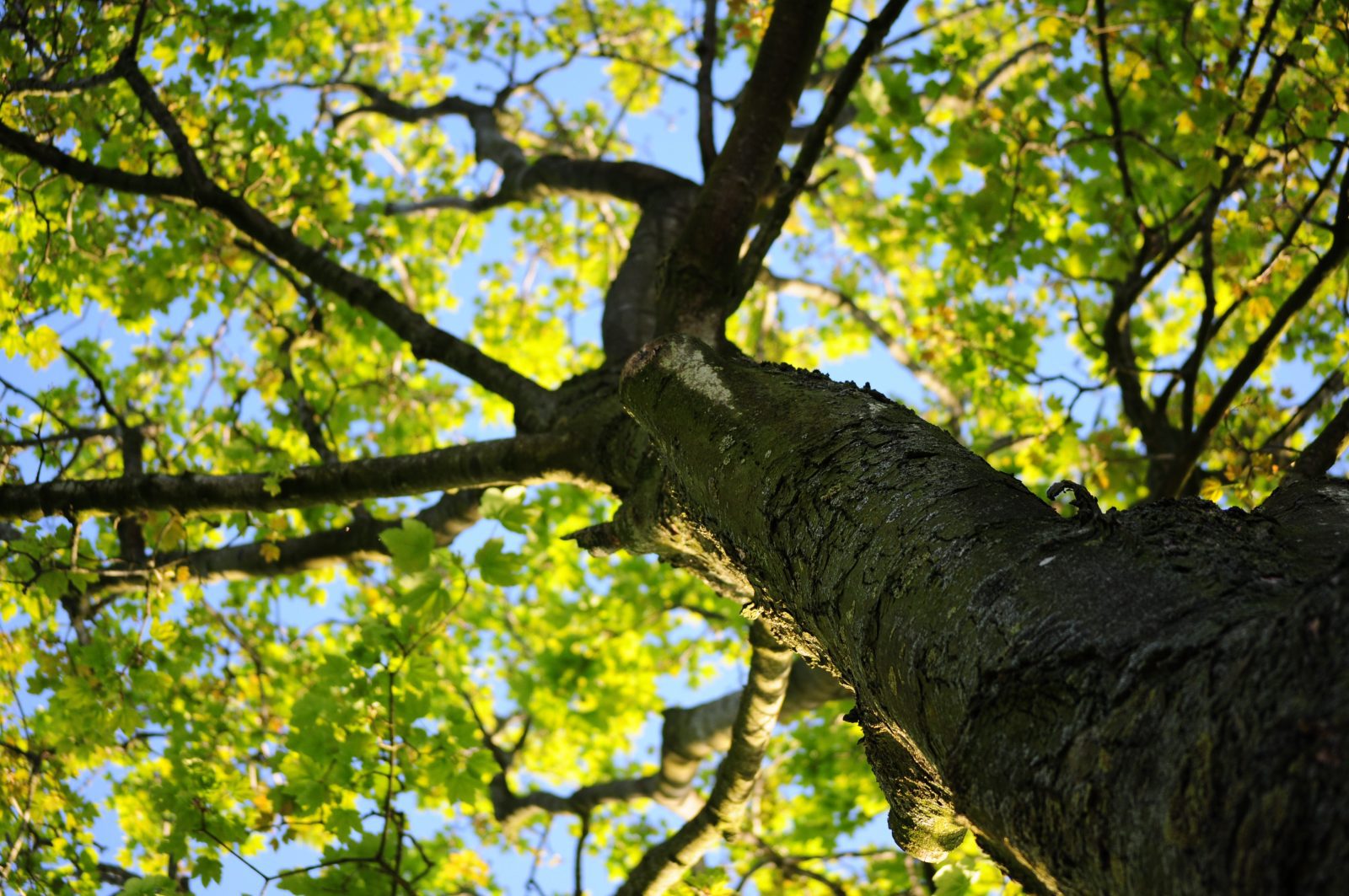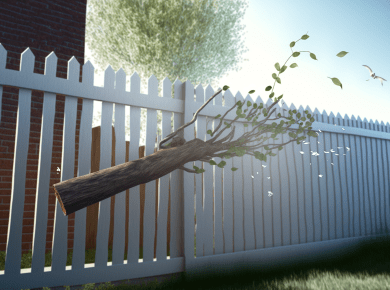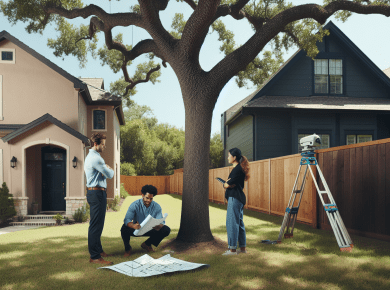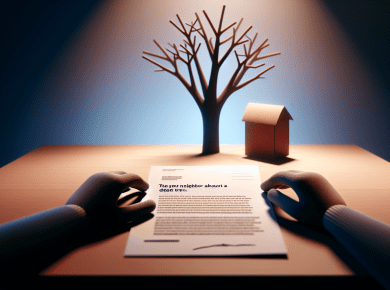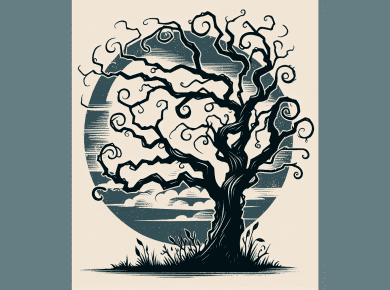Understanding Encroachments
Defining Property Encroachments
An encroachment in real estate occurs when a neighbor builds or extends a property feature that intrudes on or over another’s property, whether this action is intentional or accidental. This situation can be considered a violation of property rights. Common examples include fences, sheds, or tree limbs that cross property lines.
| Type of Encroachment | Description |
|---|---|
| Intentional | A deliberate act by a neighbor to extend their property. |
| Accidental | An unintentional encroachment, such as tree roots spreading into a neighboring yard. |
Understanding the nature of encroachments is important for homeowners. It aids in assessing the legal implications and determining the appropriate response.
Impact of Encroachments on Property Rights
Encroachments can significantly affect property rights. Unlike easements, where neighbors agree upon access and use, encroachments occur without consent. This fundamental difference can result in various legal avenues for resolution. In some cases, encroachments may lead to adverse possession rights, where the encroaching party can claim legal ownership based on continuous use.
This situation may arise if the encroachment has existed for a specified period, depending on state law. This means that the encroacher might gain legal rights over the land they have entered, complicating matters for the original property owner. Homeowners facing encroachment issues should consider sending an encroachment letter to neighbor as a first step in addressing the problem.
Understanding these implications is crucial for homeowners. They should document any evidence of encroachments and consult legal resources to protect their property rights. For more details on resolving these types of disputes, homeowners can explore topics related to property lines and trees, such as what happens if a neighbor cuts down a tree on your property and neighbor property encroachment letter.
Resolving Property Line Disputes
Property line disputes can often lead to tension between neighbors. Effective communication and proper documentation are key steps in addressing and resolving these issues.
Communication with Neighbors
The first step in resolving a property line dispute is to communicate directly with the neighbor involved. Starting a conversation can often clear up misunderstandings without the need for legal action. When approaching the neighbor, it is advisable to remain calm and respectful.
Here are a few tips for effective communication:
| Tips for Communication | Description |
|---|---|
| Be Clear and Direct | Clearly explain the issue at hand without being confrontational. |
| Listen Actively | Allow the neighbor to express their perspective and concerns. |
| Document Everything | Keep notes of conversations for future reference. |
| Use “I” Statements | Such as “I noticed the tree was cut down…” to focus on the situation rather than placing blame. |
| Propose Solutions | Suggest possible ways to resolve the issue collaboratively. |
For further insights on how to formally address tree-related issues, refer to the encroachment letter to neighbor template.
Documentation as Evidence
Proper documentation is essential when dealing with property line disputes. It serves as evidence to support one’s position regarding the boundary issue. Homeowners should gather any relevant documents, which may include:
- Property Deeds – Outlines the legal boundaries of the property.
- Surveys – Professional property surveys can clarify disputes about exact boundaries.
- Photos – Visual evidence of the trees or structures in question can prove invaluable.
- Correspondence – Keep records of any communications with the neighbor regarding the dispute.
Having this information readily available helps strengthen your position should the matter escalate or require legal intervention. This documentation can be critical if a formal letter, such as a Cease and Desist letter or a letter to neighbor about tree removal, needs to be drafted later on.
Additionally, be aware that documenting interactions can also deter further actions from the neighbor, knowing that there is a record of communication.
Taking Legal Action
In situations where a neighbor cuts down a tree or causes damage to property, homeowners must understand their options for legal recourse. This section will cover two crucial steps: sending a cease and desist letter and involving a real estate attorney.
Cease and Desist Letter
A Cease and Desist Letter is often a homeowner’s first step in addressing encroachment issues, such as when a neighbor cuts down a tree on their property. This letter formally requests that the recipient stop the offending action and can serve to document the dispute.
When drafting a cease and desist letter, it is essential to include the following elements:
| Element | Description |
|---|---|
| Date | The date the letter is written. |
| Recipient | Full name and address of the neighbor. |
| Sender | Full name and address of the homeowner. |
| Description of the Issue | Detailed account of the encroachment or property damage. |
| Request to Cease and Desist | Clear statement requesting the cessation of the activity. |
| Deadline | Date by which the recipient should comply. |
| Consequences | Outline potential legal actions if the issue is not resolved. |
For guidance on how to effectively write this type of correspondence, homeowners may refer to a sample encroachment letter to neighbor.
Involving a Real Estate Attorney
If a cease and desist letter does not resolve the issue, it may be time to consider engaging a real estate attorney. An attorney can provide valuable advice and representation, particularly when dealing with complex property line disputes and legal nuances.
Hiring a lawyer may be necessary if:
- The neighbor refuses to resolve the issue amicably.
- There are disputes regarding the property lines or ownership.
- Damage has occurred that requires legal intervention to seek compensation.
A real estate attorney can guide homeowners through the legal process, assist with property surveys, and represent them in negotiations or court, if needed. Understanding local laws and regulations is critical, which is why professional legal assistance can be beneficial.
For instance, homeowners may want to investigate questions such as who is responsible for cutting overhanging tree branches or whether they can pursue legal action if a neighbor cuts down trees on their property (can you sue someone for cutting down trees on your property).
By taking these steps, individuals can protect their property rights while addressing encroachment issues effectively.
Different Types of Encroachments
Understanding the types of encroachments is essential for homeowners facing potential disputes.
Minor Encroachments
Minor encroachments typically involve features that cross property lines slightly. They often include overhanging tree branches or landscaping elements that extend into a neighbor’s yard. Such encroachments may not lead to significant legal disputes and are commonly resolved through amicable communication. Neighbors can simply ask each other to trim overhanging branches or adjust landscaping.
| Example of Minor Encroachments | Potential Resolutions |
|---|---|
| Tree branches overhanging property line | Request neighbors to trim branches |
| Flower beds extending slightly over property line | Communicate about adjustments |
For more specific cases regarding trees, read our article on can a neighbor cut my tree or for solutions regarding overhanging branches, check who is responsible for cutting overhanging tree branches.
Major and Structural Encroachments
Major encroachments involve substantial encroachments that result in measurable damage or disruption of land, and are more likely to lead to legal action. Examples include:
- A neighbor’s driveway extending over the property line, impacting land use.
- An upstairs deck that protrudes onto a neighbor’s land.
These situations can complicate property rights and may affect property values and relationships among neighbors. Disputes over major encroachments must be approached carefully, often requiring formal letters or legal documentation. For guidance on how to address serious encroachment issues, explore our articles like what happens if a neighbor cuts down a tree on your property and can you sue someone for cutting down trees on your property.
| Example of Major Encroachments | Legal Implications |
|---|---|
| Neighbor’s driveway on your property | Possible lawsuits or property line adjustments |
| Structure built without permission | Zoning disputes and potential removal orders |
Navigating encroachments can be complex, and written communications like an encroachment letter to neighbor may be necessary to address the issues effectively. Understanding the distinction between minor and major encroachments helps homeowners make informed decisions on how to resolve disputes.
Solutions for Encroachment Issues
When dealing with encroachment issues, it’s essential for homeowners to explore effective strategies to resolve the situation amicably. Two recommended approaches include obtaining property surveys and negotiating directly with neighbors.
Property Surveys for Boundary Clarification
In situations involving encroachments and property line disputes, obtaining a new property survey can be a crucial step. A survey provides an accurate representation of property boundaries, helping to clarify where one property ends, and another begins. This documentation can serve as valuable evidence if discussions with neighbors become contentious.
Benefits of obtaining a property survey include:
| Benefit | Description |
|---|---|
| Accurate Boundary Definition | Clearly defines property lines based on legal records and measurements. |
| Resolution Aid | Provides concrete evidence for negotiations or legal proceedings. |
| Property Value | Increases knowledge about property ownership, potentially impacting property value. |
Homeowners are encouraged to work with licensed surveyors to ensure the measurements are precise and acknowledged by local regulations. Once a survey is completed, the homeowner can use its findings to address any encroachment issues.
Negotiating with Neighbors
Open communication with neighbors is often the most effective way to resolve property line disputes. Homeowners can start by discussing the issue directly, using documentation from property surveys or other evidence to support their claims.
Key steps for negotiating with neighbors include:
- Initiate a Conversation: Start with a friendly discussion before escalating the conflict.
- Present Documentation: Use evidence such as surveys or photographs to clarify the property boundaries.
- Explore Compromise Solutions: Options may include granting an easement, selling the encroached land to the neighbor, or scheduling a future discussion to reach an agreement.
- Cease and Desist Letter: If informal discussions do not yield results, consider sending a formal encroachment letter to neighbor to assert property rights.
If negotiation fails, involving a real estate attorney may be necessary to explore legal options. Understanding local laws related to property damage can also inform the discussion. Homeowners should remain calm and professional during negotiations to foster a productive dialogue and avoid escalating tensions.
For further information about property boundaries, homeowners can refer to related topics such as who is responsible for cutting overhanging tree branches or can you sue someone for cutting down trees on your property.
Encroachment Risks and Consequences
When neighbors encroach on property lines, it can lead to several risks and consequences that must be understood by affected property owners. These include liability and insurance implications, as well as effects on the resale value of the property.
Liability and Insurance Implications
Property encroachments can significantly increase liability issues for homeowners. If a neighbor builds a structure, such as a fence or shed, that extends onto someone else’s property, it can lead to legal disputes and potential injuries. In these cases, the original property owner may find themselves involved in lawsuits, especially if an accident occurs on the encroached area.
| Liability Risk | Insurance Impact |
|---|---|
| Legal disputes with neighbors | Higher insurance premiums |
| Injury claims related to encroachment | Potentially more complex claims processing |
| Possible adverse possession claims | Need for additional liability coverage |
Higher insurance premiums may arise as insurers consider properties with unresolved encroachment issues as higher risks. This situation can lead to a cycle where more disputes lead to increased costs for homeowners. Additionally, unresolved encroachments, if permitted over time, could result in adverse possession rights for the encroaching neighbor, making timely resolution critical.
Effects on Property Resale Value
The resale value of a property can be adversely affected by encroachments. Potential buyers may be deterred from purchasing a home with visible encroachment issues, fearing future disputes with neighbors or uncertainty regarding property boundaries. Important factors to consider include:
| Market Factor | Impact on Property Value |
|---|---|
| Visible encroachments | Reduced attractiveness to buyers |
| Potential legal disputes | Decreased market value |
| Unresolved property boundary issues | Longer time on market, lower sale price |
Encroachments can be a red flag for buyers, impacting their perception of property management and leading to lower offers or difficulties in selling the home altogether. It’s essential for homeowners to understand these risks to maintain their property value and marketability.
Navigating these issues may require drafting an encroachment letter to neighbor and possibly seeking legal advice to mitigate risks. It’s wise for homeowners to be proactive in addressing encroachment matters, ensuring protection of their rights and property value.
